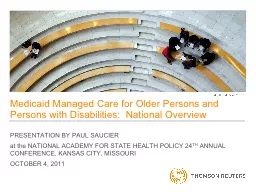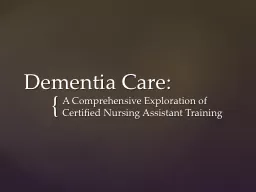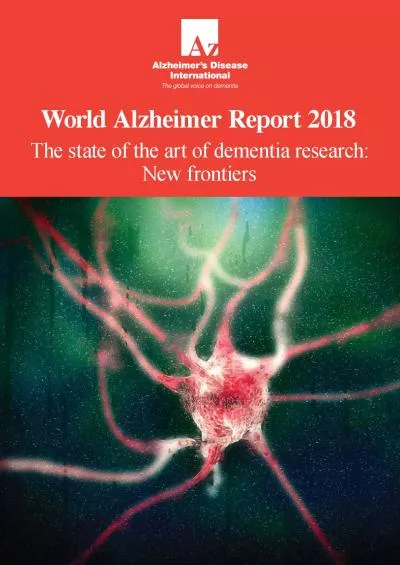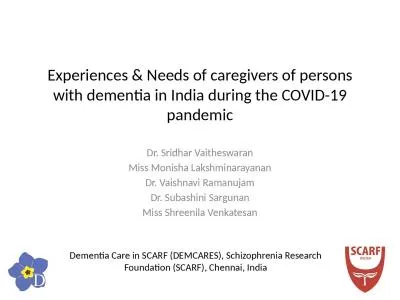PPT-Caring for Persons with Dementia in the State of Washington
Author : kittie-lecroy | Published Date : 2018-09-20
Mimi Pattison MD FAAHPM Regional Medical Director Franciscan Hospice and Palliative Care mimipattisonchifranciscanorg Washington State Hospice amp Palliative Care
Presentation Embed Code
Download Presentation
Download Presentation The PPT/PDF document "Caring for Persons with Dementia in the ..." is the property of its rightful owner. Permission is granted to download and print the materials on this website for personal, non-commercial use only, and to display it on your personal computer provided you do not modify the materials and that you retain all copyright notices contained in the materials. By downloading content from our website, you accept the terms of this agreement.
Caring for Persons with Dementia in the State of Washington: Transcript
Download Rules Of Document
"Caring for Persons with Dementia in the State of Washington"The content belongs to its owner. You may download and print it for personal use, without modification, and keep all copyright notices. By downloading, you agree to these terms.
Related Documents














